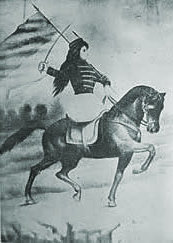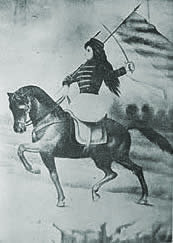
|
Women and Independence in Latin America An exploration of women's involvement in the Latin American Wars of Independence |

|

|
Women and Independence in Latin America An exploration of women's involvement in the Latin American Wars of Independence |

|
Gender:Female
Ethnic origen: Unknown
Events:
| 1804 | - | Chile | - | Not applicable | - | Born |
| 1826 | - | Arequipa | - | Unknown | - | She was forced to enter the Monasterio de Santa Teresa in 1826. |
| 1831 | - | Arequipa | - | Unknown | - | She escaped from Monasterio de Santa Rosa, Arequipa, during the night of 6 March 1831. |
Connections:
NunsBiography:
Born in 1804, she was forced to enter the Monasterio de Santa Teresa in 1826. She escaped in 1831 after faking her death in a fire. Two other nuns set alight to another body in her cell. (Knaster, 158.) Flora Tristán relates this story. (Tristán, 191,199-204, 239-242.)
She escaped from the Monasterio de Santa Rosa, during the night of 6 March 1831 after staging her "death" by leaving a burning body in her cell. The event shook society, as it underlined that nuns did not necessarily live happy lives of prayer and meditation. When she was discovered, Bishop Goyeneche said she must return to the convent. Rome finally intervened ordering Gutíerrez to be secularised and she continued to live in seclusion in Arequipa. Tristán visited Gutiérrez in her seclusion and also went to the Monasterio. She is said to have replied to Tristán when asked about her new life of freedom: "¿Yo, libre? ¿y en qué país ha visto usted que una debíl criatura, sobre quien cae el peso de un atroz prejuicio, sea libre? Aquí, en este salón ataviada con este lindo vestido de seda rosa ¡Dominga es siempre la monja de Santa Rosa! A fuerza de valor y constancia pude escapar de mi tumba. Pero el velo de lana que yo había elegido, está siempre sobre mi cabeza y me separa para siempre de este mundo. En vano me huído del claustro. Los gritos del pueblo me rechazan." (Guardia, 57-61)
References:
Guardia, Sara Beatriz (1985) Mujeres peruanas: El otro lado de la historia
Knaster, Meri (1977) Women in Spanish America: An Annotated Bibliography from Pre-Conquest to Contemporary Times
Tristán, Flora Jean Hawkes (editor). (1986) Peregrinations of a Pariah